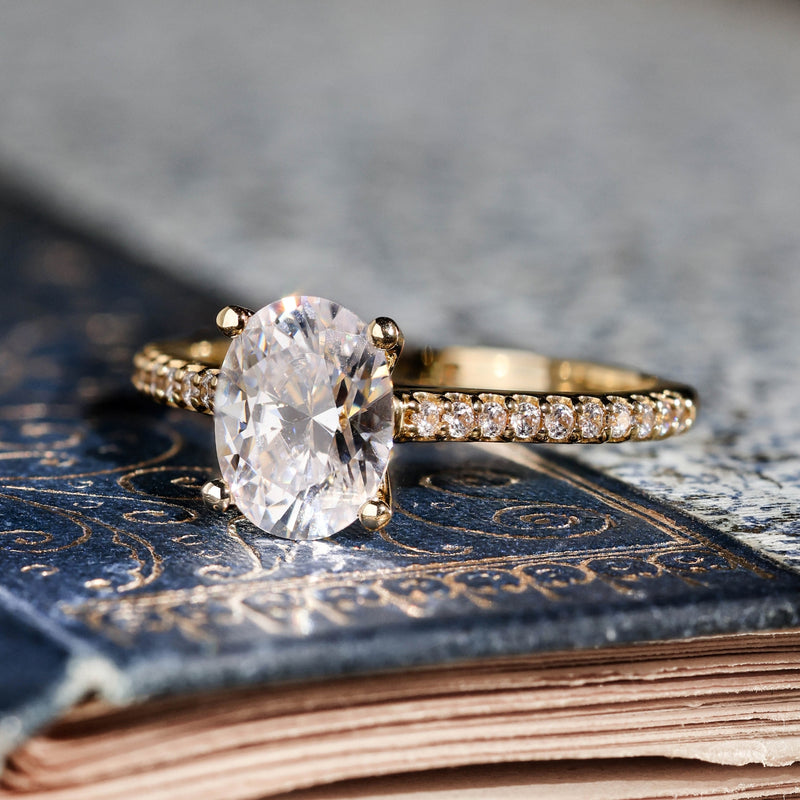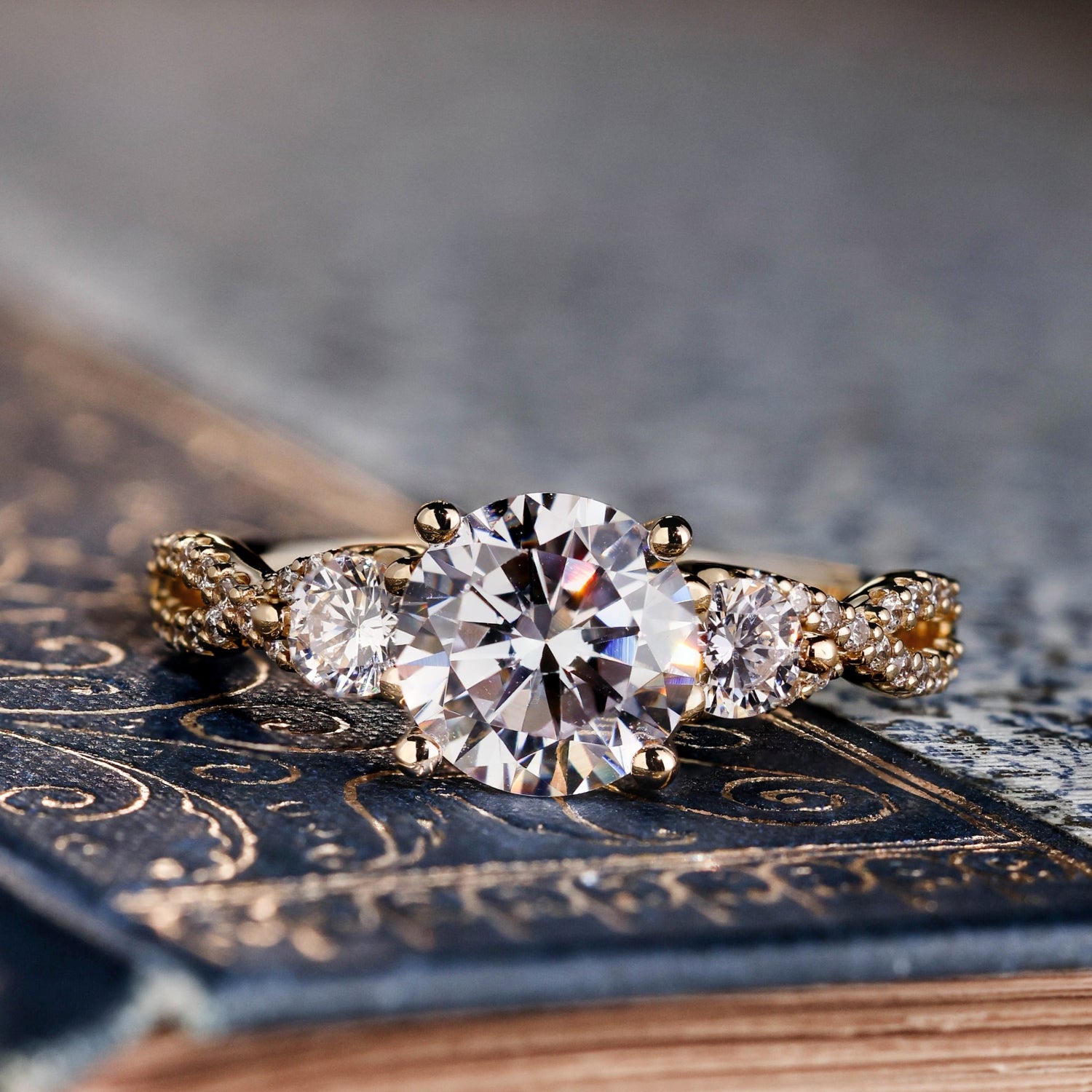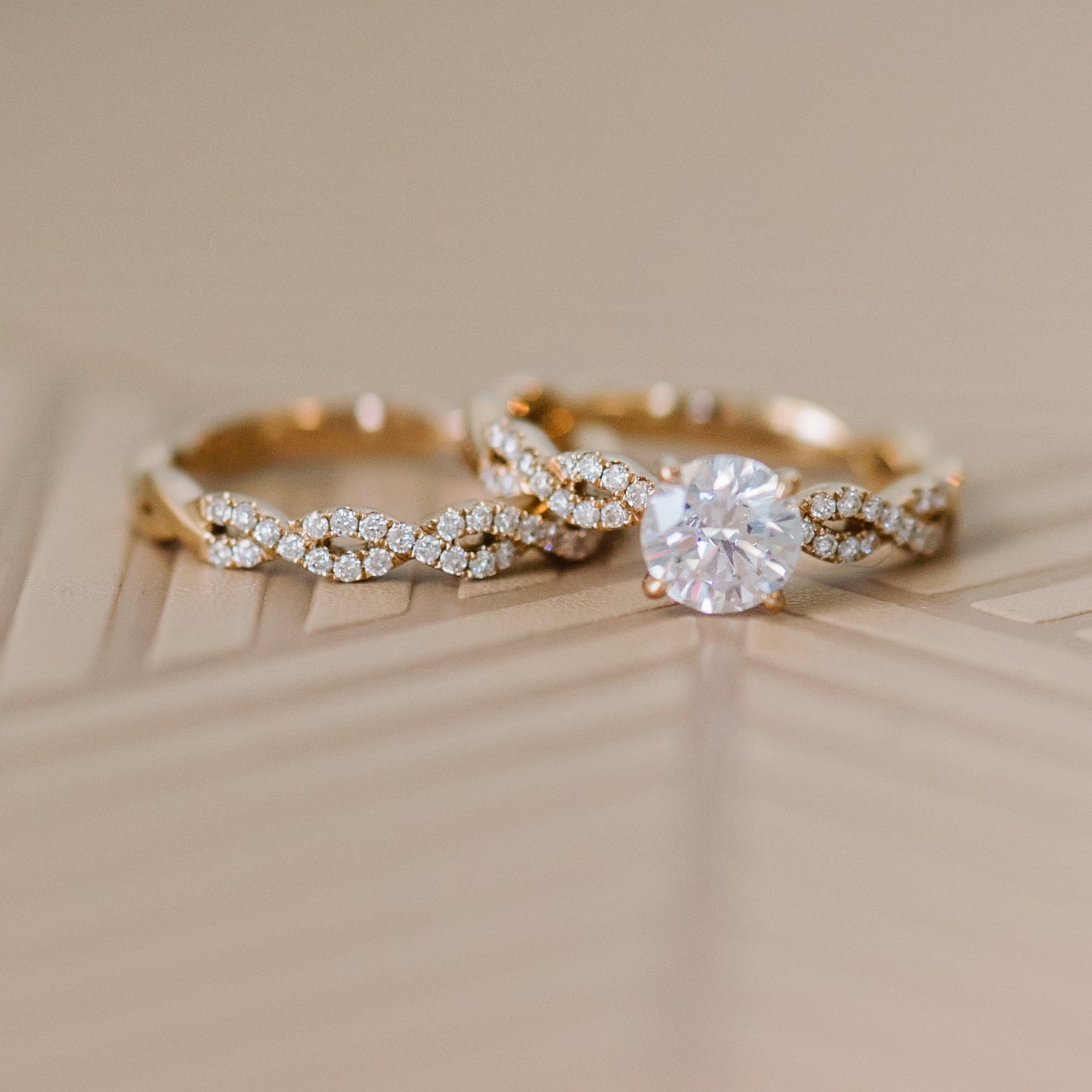Why Laboratory Grown Diamond Involvement Rings Are the Perfect Choice for Eco-Conscious Couples
Lab-grown Diamond interaction rings offer an engaging option for pairs that prioritize sustainability. These diamonds provide a striking choice to conventional mined stones, significantly decreasing environmental injury. They are developed making use of advanced methods that guarantee both high quality and brilliance. As understanding of moral sourcing expands, several couples are reconsidering their selections. What implications does this shift have for the future of the Diamond sector?

The Environmental Effect of Typical Diamond Mining
Although Diamond mining has long been commemorated for its allure and reputation, the ecological repercussions of typical mining methods are increasingly concerning. The extraction of rubies frequently involves considerable land interruption, resulting in deforestation and environment loss for numerous varieties. Additionally, the process consumes vast quantities of water, which can diminish neighborhood resources and detrimentally impact surrounding neighborhoods. Toxic chemicals used in mining operations can contaminate neighboring water resources, additionally endangering both human populaces and wildlife.
Moreover, the carbon impact related to carrying extracted diamonds contributes to the overall environmental toll. The heavy equipment and devices required for mining procedures add substantially to greenhouse gas exhausts. As understanding of these problems grows, several customers are beginning to wonder about the sustainability of standard Diamond sourcing. This change in point of view highlights the urgent requirement for even more ecologically pleasant alternatives, such as lab-grown rubies, which promise to lower the ecological influence while maintaining the charm and value of Diamond fashion jewelry.
The Process of Creating Lab-Grown Diamonds
Lab-grown diamonds are developed through 2 key techniques: High Stress Heat (HPHT) and Chemical Vapor Deposition (CVD) The HPHT process resembles the all-natural conditions under which rubies create in the Earth's mantle. It involves subjecting carbon to severe pressure and temperature, causing the crystallization of carbon atoms into Diamond frameworks. On the other hand, the CVD technique enables for the growth of rubies in a controlled setting. This method uses a gas blend including carbon, which is energized to develop plasma, allowing carbon atoms to down payment onto a substrate and expand layer by layer into Diamond crystals.
Both approaches create diamonds that are chemically and literally identical to natural diamonds - lab grown diamond engagement rings. The selection of method typically depends upon the preferred qualities and size of the last gem. This innovative method to Diamond creation not only offers a lasting choice however additionally enables greater transparency in the sourcing of products
Quality and Luster of Lab-Grown Diamonds
While several might presume that lab-grown diamonds vary in quality from their all-natural counterparts, they in fact show similar sparkle and aesthetic allure. Lab-grown rubies are produced utilizing innovative technology that replicates the natural conditions under which rubies create, causing rocks that have the same physical and chemical residential properties. These diamonds achieve the same exceptional clearness and shade grading as mined rubies, making them identical to the naked eye.
In regards to radiance, lab-grown rubies frequently display exceptional light efficiency because of their precision-cut facets. The rigorous high quality control during manufacturing guarantees that these diamonds meet high criteria, enhancing their visual appeal. Furthermore, they are offered in a range of sizes and shapes, allowing couples to find the excellent ring to match their individual design. Inevitably, lab-grown diamonds provide an elegant combination of beauty and top quality, making them an attractive choice for engagement rings.
Honest Considerations in the Diamond Industry
As customers become increasingly familiar with the moral ramifications surrounding Diamond sourcing, the conversation around the Diamond industry has actually changed noticeably. Concerns about dispute diamonds, typically referred to as "blood rubies," have actually prompted require greater openness and liability in mining practices. These rubies are mined in battle areas and marketed to finance armed problem, increasing major ethical concerns for consumers. Additionally, the ecological impact of traditional Diamond mining has actually come under scrutiny, with concerns such as habitat devastation and water contamination regularly highlighted.
In feedback, many have actually turned to lab-grown diamonds as a more ethical alternative. These rocks are produced in regulated settings, eliminating the dangers related to mining. Subsequently, lab-grown diamonds appeal to consumers seeking to make responsible selections that line up with their values. The growing demand for moral practices remains to reshape the Diamond market, promoting humane and sustainable sourcing approaches.
Cost-Effectiveness of Lab-Grown Diamonds
Lab-grown rubies use a compelling option for customers looking for cost-effective interaction rings - lab grown diamond engagement rings. Valued significantly reduced than their all-natural equivalents, they offer exceptional value for money without compromising top quality or appearance. This price makes lab-grown diamonds an attractive alternative for budget-conscious pairs
Reduced Price Point
Many pairs are discovering that going with lab-grown Diamond involvement rings can considerably reduce their total expenses without giving up high quality or elegance. These rubies normally cost 30% to 50% less than their extracted equivalents, making them an eye-catching option for budget-conscious consumers. The cost advantage arises from lower production prices and a more efficient supply chain, which gets rid of the costs related to mining. Therefore, couples can purchase larger rocks or more complex setups, boosting the overall visual of their rings. This price not just enables for a much more personalized option but also aligns with the values of eco-conscious pairs that prioritize sustainability while continuing to be economically wise. Lab-grown diamonds provide a best mix of weblink style and economic situation.
Value for Cash
The cost-effectiveness of lab-grown rubies expands past their first cost, using phenomenal value for money. Unlike natural diamonds, lab-grown choices can be as much as 40% less costly while keeping the same physical and chemical buildings. This cost allows pairs to buy larger or higher-quality rocks without surpassing their budgets. The resale value of lab-grown rubies is gradually boosting, making them a more viable option for future monetary factors to consider. In addition, lab-grown diamonds usually feature lower environmental and honest expenses, supplying couples with assurance. By picking lab-grown diamonds, eco-conscious couples not only conserve money but additionally add to sustainable techniques, enhancing their general worth recommendation in the jewelry market.

Modification Options for Lab-Grown Involvement Rings
Exactly how can pairs assure their involvement ring reflects their distinct romance? Personalization alternatives for lab-grown Diamond involvement rings offer an excellent service. Pairs can select from various Diamond forms, including round, princess, or oblong, permitting them to select a design that resonates with their personal find more info visual.
Furthermore, they can make a decision on the setup-- be it jewelry, halo, or vintage-inspired-- making sure the ring matches the Diamond's brilliance. Steel choices, such as white gold, yellow gold, or climbed gold, further boost customization, satisfying private preferences.
Couples can incorporate purposeful engravings, adding a sentimental touch that symbolizes their bond. With these considerable personalization choices, lab-grown Diamond interaction rings not just symbolize a pair's love yet also mirror their values, making them a perfect option for eco-conscious collaborations. Eventually, these rings become a true depiction of their one-of-a-kind trip with each other.
Regularly Asked Concerns
How Do Lab-Grown Diamonds Contrast to Natural Diamonds in Value?
Lab-grown rubies commonly set you back 20-40% less than natural diamonds, offering comparable quality and appearance. Their lower cost point makes them an attractive choice, specifically for budget-conscious customers seeking ethical and lasting alternatives in precious jewelry.

Are Lab-Grown Diamonds Extra Durable Than All-natural Diamonds?
Lab-grown rubies have the same physical and chemical homes as natural rubies, including toughness. Both kinds score a perfect see this 10 on the Mohs range, ensuring that lab-grown diamonds are just as resistant to scraping and damages.
Can Lab-Grown Diamonds Be Marketed Easily?
Lab-grown diamonds can be re-selled, but their market need varies compared to all-natural rubies. While some buyers value their ethical origins, others might favor natural alternatives, possibly influencing resale value and ease of purchase.
What Are the Care Instructions for Lab-Grown Diamonds?
Lab-grown diamonds require regular like maintain their brilliance. Cleaning with mild soap and warm water, using a soft brush, and preventing severe chemicals will certainly help protect their glimmer and honesty for several years to come.
Are There Any Kind Of Qualifications for Lab-Grown Diamonds?
Lab-grown diamonds can be certified by respectable companies such as the Gemological Institute of America (GIA) and the International Gemological Institute (IGI) These accreditations assure quality, credibility, and adherence to sector requirements for lab-created gems.
Both techniques create diamonds that are chemically and physically identical to natural rubies. Lab-grown rubies are developed making use of innovative technology that replicates the natural conditions under which rubies develop, resulting in stones that have similar physical and chemical properties. Lab-grown diamonds commonly cost 20-40% less than all-natural rubies, providing comparable top quality and look. Lab-grown diamonds possess the same physical and chemical properties as all-natural diamonds, including toughness. Lab-grown diamonds can be marketed, however their market need differs contrasted to all-natural diamonds.